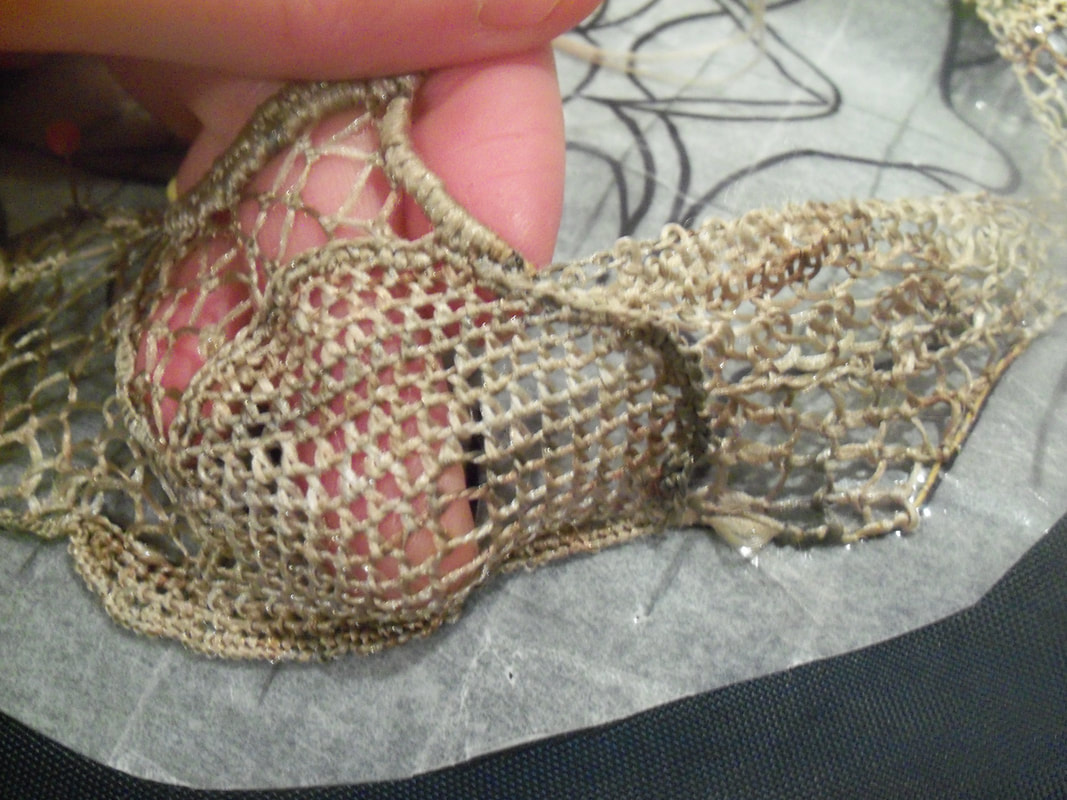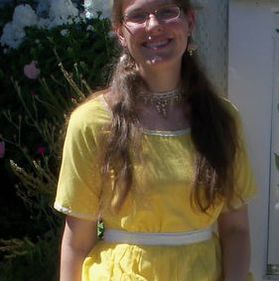|
Talking with a family member the other day about how people curate their online content to create an alternate world where they always look nice, their house clean, their work polished, I realized that as much as I value integrity and honesty, I also "put my best foot forward" when taking pictures for this blog. If there's stuff on the table, I move it so you only see my pattern pieces, not my dirty plates. If I take several unflattering pictures and one flattering one, guess which one I post? This is natural, and not entirely a bad thing. (After all, do you really want to see my dirty plates?) But there's a downside to the illusion of perfection. When all our friends and family look so perfect online, we might get discouraged or feel shame for the world of dirty dishes we have. Intriguingly, while some people decry the false perfection online, other people complain that we've become too sloppy in real life. Many style bloggers bemoan the pervasive informality of our world... that people go outside in sweatpants and messy hair. Vintage fashion enthusiasts often mourn for the well-put-together world of old photographs. Why oh why don't people care any more about looking presentable when they leave their houses? But here's an interesting thought: maybe the internet is the public space of today, just as the streets were public spaces in the past. Maybe modern people put as much thought and time into selecting the best profile picture and staging the house for Facebook photos as their ancestors did about brushing lint off their wool suits and bowler hats before going outside. When someone today rolls out of bed and runs half-dressed to the convenience store for milk, could it be because the physical world of the street and the flesh-and-blood people at the store seem less real or relevant than the friends, family, and co-workers online? That same bleary-eyed mess of a person schlepping the milk home might get properly dressed and gussied up before taking pictures for the internet. But I digress from the title of this post, my failures. I refer not to my failures at taking good pictures or looking presentable, but my sewing failures: projects that were ill conceived or too ambitious, or that I lost interest in. Today, I'm going to share some failed projects (like I did with the Kluge Job), so you can see that I don't always make something nice. And maybe some of your comments will help me the next time I attempt something similar. REGENCY SPENCERA.k.a. stand-up collar fail. I wanted a standing collar like I'd seen in fashion plates, but I didn't stiffen it enough or support its structure, so down it flops. I'm also not a fan of the general shape of the jacket, the location of the sleeve fullness, or the way the scallops come together at the front of the collar. The only thing I like is the way the sleeves taper in at the wrist, then flare out over the hand. The whole thing was hand-sewn, and pretty well put together, but I hate it. In the end, I finished everything but the bottom hem before shoving it in a drawer and forgetting about it for years! Now I'm trying to give it away. So why did this Spencer jacket fail? I think it was too ambitious for my skill level when I started it. I had never draped anything, nor did I have the first clue about pattern alterations, and so I kept making changes, which made problems, which led to more awkward fixes... On the other hand, if I never attempted something beyond my skills, how would I know what I don't know? Since putting this in a drawer, I have always had its problems on my mind while reading other people's blogs or books about sewing, and when I see a solution, I file it away. Next time I attempt something like this, I'll be better prepared. LACE WITHOUT CORDONNETThread choice fail. Also, boring. My idea was to do some needlelace (which I'd done before in more traditional ways) in a kind of freehand way, with no cordonnet to outline and support the motifs. I laid cordonnet only for the perimeter of the lace, then worked my way inward, changing up stitches and building structure as I went. At first it was interesting and fun, but after a while, I grew tired of struggling with the thread I'd chosen (some kind of un-spun serger thread?), which wanted to split, fray, and snarl. I also felt that as the lace got bigger, the underlying picture failed to emerge. The delineations of line were too weak. Anyway, I got bored with it. But I learned a lot, and my next project will be better for it. FIRST BODICE BLOCK A pattern drafting fail... I aimed for a scoop neck, but the neckline is too wide an in the wrong places, so the shoulder straps are in bad place. There are also armscye problems: I can't put my arm forward comfortably. When I eventually drafted sleeves for it, they were a failure, too, with insufficient ease in the cap causing drag lines. Three examples: the gray dress and the salmon striped one are sleeveless and display the wide neck. My highlighter dress has the bad sleeves, too. As for style, the waistline of the bodice falls at my natural waist, which is technically good, but looks dorky on me since I'm high-waisted. SLEEVESActually, the highlighter dress and the Rose Chintz bodice both show the same consistent problem: I don't understand how sleeves work! I understand that the length of the sleeve cap must exactly match the length of the armscye. I even understand how to trace the armscye to approximate the curve, so the sleeve fits mostly right. But I can't figure out how to get the sleeve cap height I need without changing the length of the cap! So I always have drag lines from armpit to apex of shoulder! I don't understand map projections, either. So many ways to peel an orange, and I just can't visualize any of them until someone shows me. So while I can easily draw the mostly flat area under the arm, and the mostly flat area over the arm, I get lost where they intersect and curves invert themselves (or something). Seriously, my brain goes on the fritz. WRAP DRESS This top of a dress was my first attempt at draping, and pattern-wise wasn't so bad. But the diagonal cuts of each side make for a bias-pulling mess if you're not careful. I should have stay-stitched the V-neck area, and interfaced everything really well. Since I didn't, the fabric rippled and stretched and looked worse every time I washed it! And I love this fabric! Such a shame! Here are the disassembled pieces laid out, with the grain and cross-grain roughly marked in blue. The long edge at the top of the pieces is the v-neck, which you can see is on the bias.
1 Comment
The Sister
8/14/2017 01:43:04 pm
These posts are good, so your followers can see your failings too. I always appreciate the vulnerability of someone who is willing to share/show their mistakes. Especially when they have a "this is what I learned" attitude. It encourages other beginners, and keeps the person humble.
Reply
Leave a Reply. |
Karen Roy
Quilting, dressmaking, and history plied with the needle... Sites I EnjoyThe Quilt Index Categories
All
Archives
March 2024
|












 RSS Feed
RSS Feed